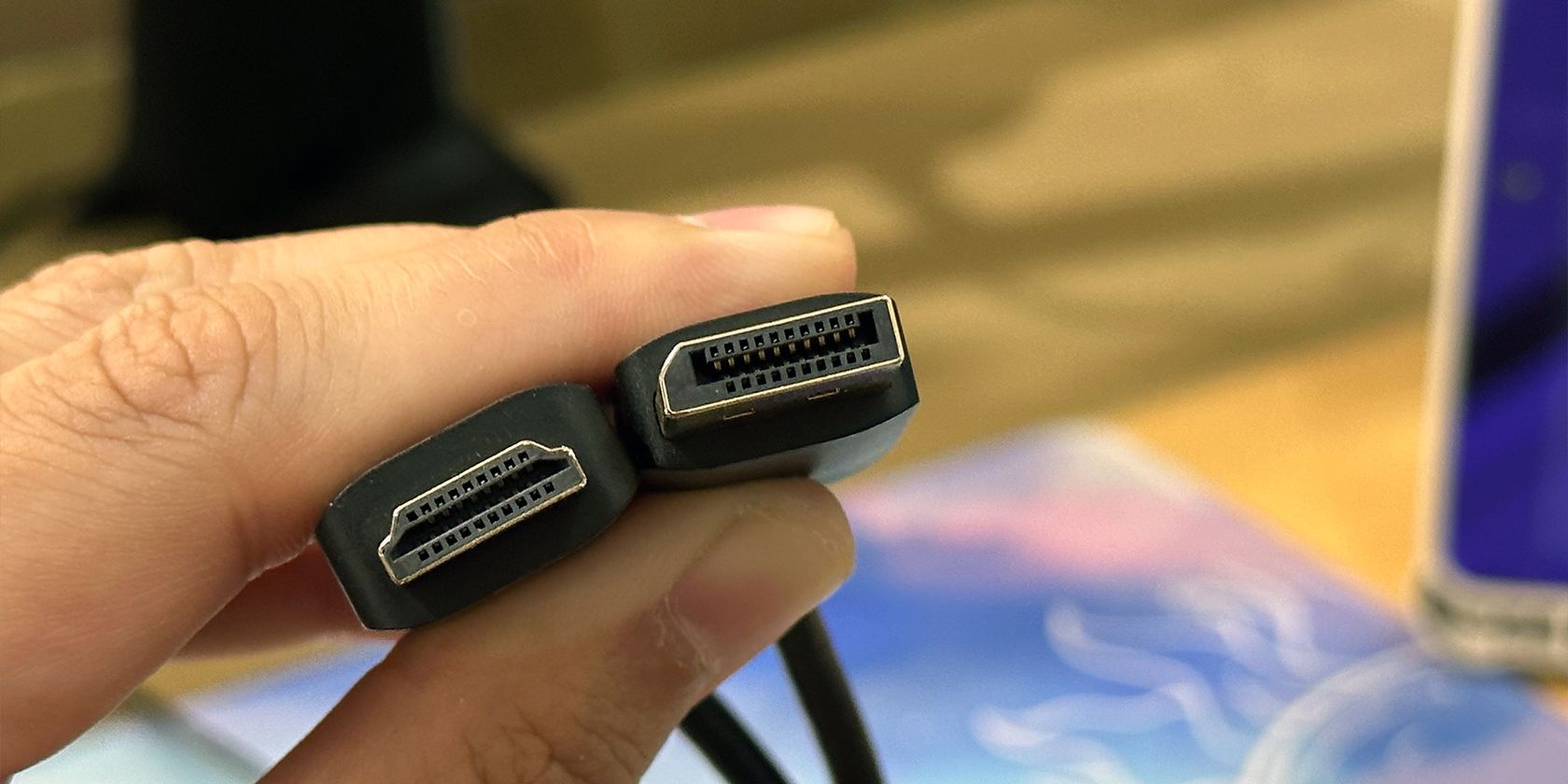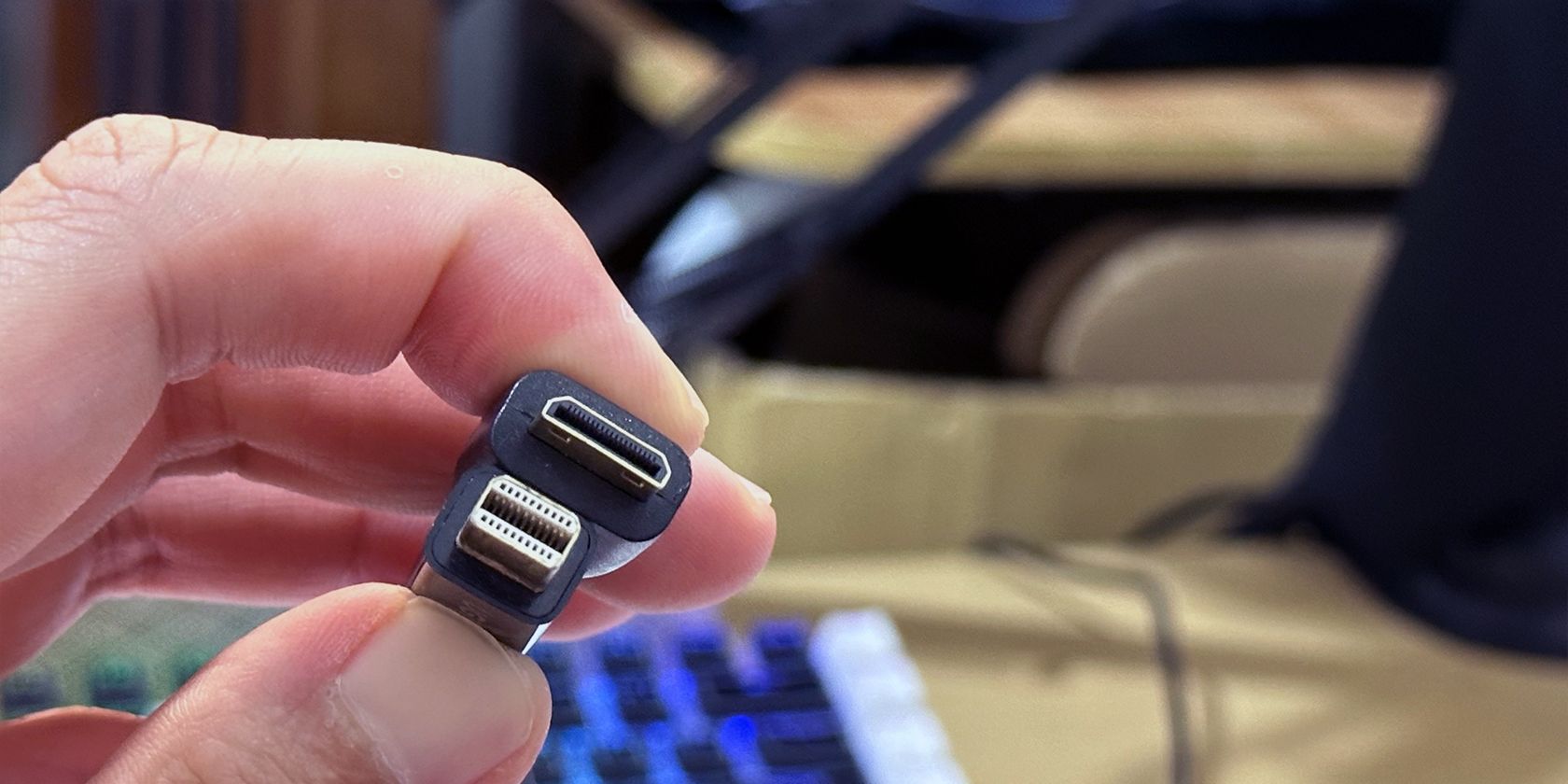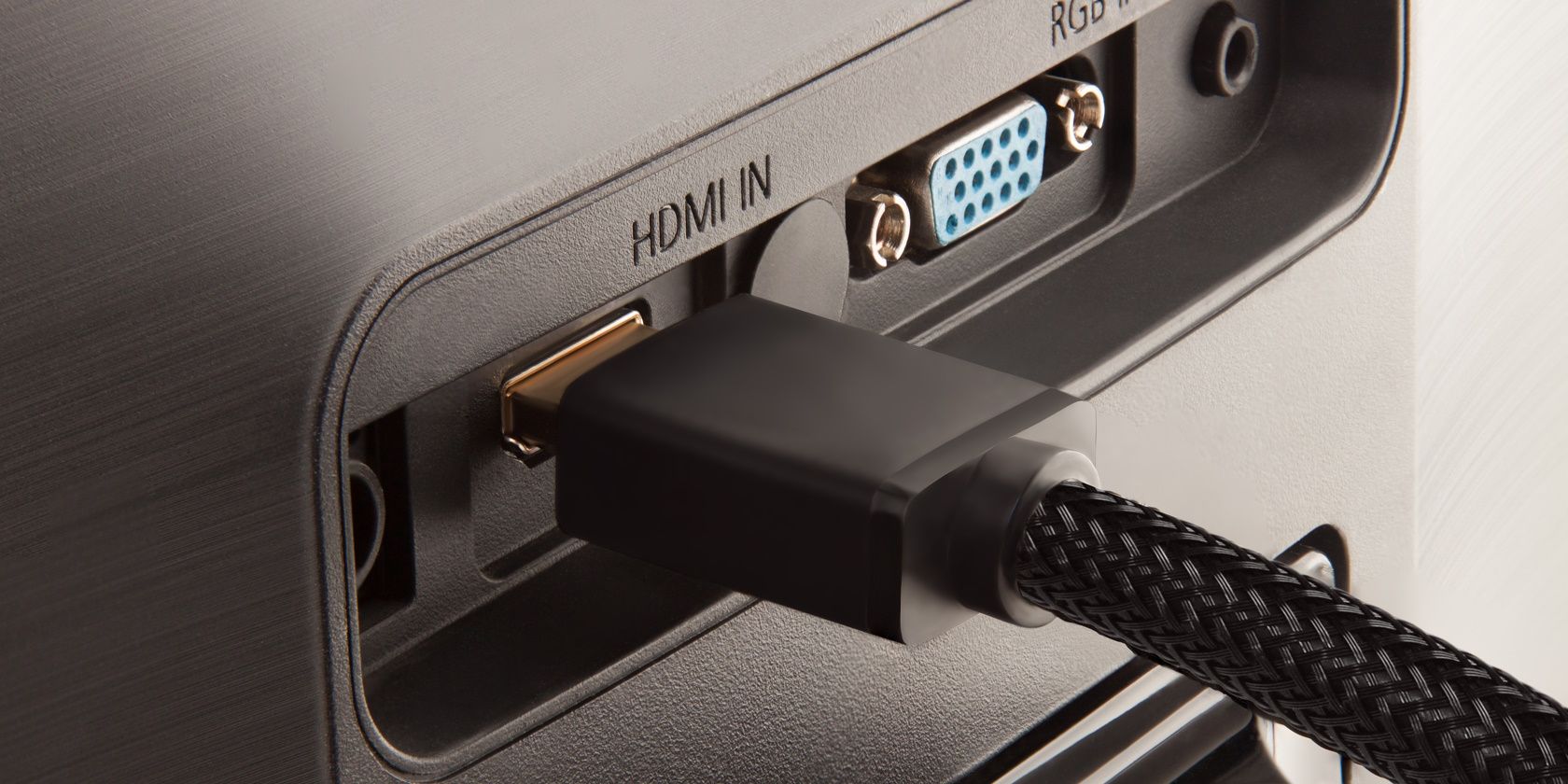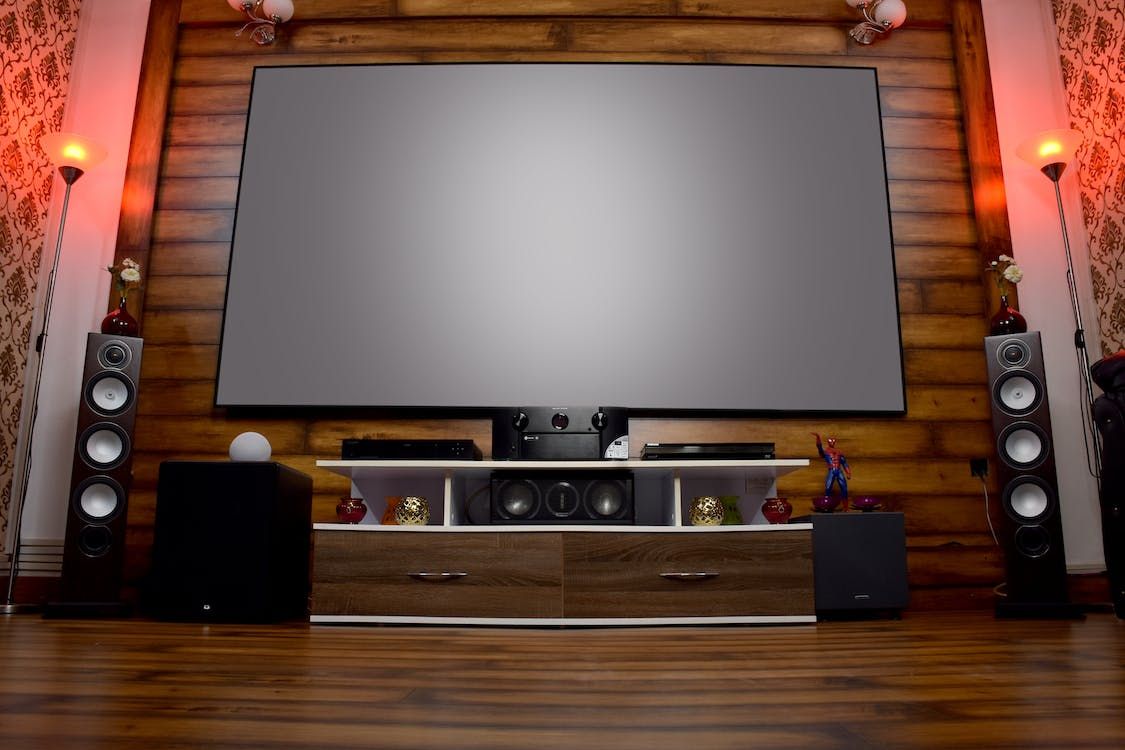If you have a high-end GPU like the 7900 XTX, it would have DisplayPort 2.1 ports. Simultaneously, if you have a 9th-generation console like the PlayStation 5 and the Xbox Series X, you probably use an HDMI 2.1 cable.
Both DisplayPort and HDMI transfer video data, and their latest iterations are version 2.1. But what’s the difference between DisplayPort 2.1 and HDMI 2.1?
DisplayPort 2.1 vs. HDMI 2.1 Specifications
Before we look at the finer details of DisplayPort and HDMI, let’s first look at what they have on paper:
|
DisplayPort 2.1 (DP80) |
DisplayPort 2.1 (DP40) |
HDMI 2.1 |
|
|---|---|---|---|
|
Maximum Total Bandwidth |
80 Gbit/s |
40 Gbit/s |
48 Gbit/s |
|
Data Channels |
4 |
4 |
4 |
|
Maximum Passive Length |
1 m |
2m |
3 to 5m |
|
Maximum Refresh Rate (4K/10-Bit Color) |
267 |
142 |
153 |
As of 2023, DisplayPort 2.1 (What is DisplayPort 2.1?) comes in two flavors: DP80 and DP40. On the other hand, HDMI 2.1 only has one standard, which performs slightly better than the lower DP40 DisplayPort 2.1 standard.
Nevertheless, the specifications for DP80 DisplayPort 2.1 is far better than what HDMI 2.1 offers—but the comparison doesn’t end there. Let’s check out all HDMI and DisplayPort’s other features and see which one works for you.
DisplayPort 2.1 vs. HDMI 2.1 Features
While DisplayPort 2.1 and HDMI 2.1 primarily aim to transfer video data from a source to the screen, they have different features catering to various purposes. These are some of the features you can find on only one or the other standard and how they would affect your decision.
Port Design
If you’re choosing a standard for your gaming monitor and high-end GPU, like the AMD 7900 XTX, you can select between DisplayPort 2.1 and HDMI 2.1 as they offer both ports. But if you’re device only has one port, like the Xbox Series X and the PlayStation 5, you’re pretty much stuck with what the manufacturer installed.
Nevertheless, DisplayPort 2.1 and HDMI 2.1 has almost the same size. The main difference is that the DisplayPort cable (the right cable in the photo above) only has one notch, while the HDMI cable (the left cable in the photo above) has two notched corners—but this is for the standard-sized plugs.
HDMI also has other cable types; for example, the Mini HDMI cable (the upper cable in the image above) is shaped like a standard HDMI plug but about 50% thinner and three-quarters smaller. DisplayPort also offers a smaller version called MiniDP (the lower cable in the image above). This standard is about the same thickness as the standard DisplayPort 2.1 plug but is less than half its width.
Aside from these varying plugs, both also offer USB-C compatibility. We have DisplayPort over USB-C, the widely used standard for connecting devices like laptops and smartphones to USB-C monitors, and HDMI Alt Mode, which lets you connect USB-C devices to HDMI devices, like TVs and projectors.
Multi-Stream Transport (MST)
This technology allows you to daisy-chain multiple monitors on one port, which DisplayPort allows. And with the latest DisplayPort 2.1 version, you can drive up to three 10K displays at 60Hz and 10-bit color. So, if your computer has a compatible port, you can use MST to connect multiple displays to your laptop.
On the other hand, HDMI 2.1 doesn’t offer this capability.
Consumer Electronics Control (CEC)
CEC (what is HDMI-CEC?) allows devices connected via HDMI to talk to each other. This is why you can control some high-end TVs and home theaters using one remote, even from different manufacturers. This feature is still available on HDMI 2.1—for example, the PlayStation 5, which uses it, tells your TV to turn on and go to the correct source via HDMI-CEC when you power it on.
This handy feature helps you save on the number of remote controls you need in your living room. Unfortunately, DisplayPort 2.1 doesn’t offer this technology, so HDMI is preferable for most home theater setups.
DisplayPort 2.1 vs. HDMI 2.1: Which Should You Buy?
Now that you know the difference between DisplayPort 2.1 and HDMI 2.1, which port or cable should you get? Unfortunately, there is no single answer to this question, so let’s look at the possible circumstances you’ll face when picking at standard.
For PC Gaming
We highly recommend using DisplayPort for gaming if you’re into high-end games. That’s because DisplayPort lets you enjoy the fastest refresh rates available. For example, you can enjoy 4K 240Hz gaming with DisplayPort 2.1, and it’s also widely available on most GPUs.
If you pick HDMI 2.1, the best you can get is 4K 144Hz. While this is already a good refresh rate, you’d probably want to maximize your gear.
For Professional Work
DisplayPort 2.1 and HDMI 2.1 will work well if you’re a professional, depending on your needs. If you’re working from a laptop and want multiple displays, we highly recommend using DisplayPort. However, your computer should have a DisplayPort or MiniDP port, and your monitors must be MST-compatible.
Alternatively, you can get an MST hub on Amazon to skip buying expensive MST-compatible monitors and use just about any display that supports DisplayPort or HDMI.
But if you prefer using just one monitor, HDMI 2.1 is a better option, as it’s compatible with more devices. For example, HDMI is available on most laptops, while you can only usually find MiniDP or DisplayPort on mid-range to high-end computers.
For Home Entertainment
If you’re building a home theater, it’s best to stick with HDMI 2.1. That’s because most electronic appliances, like TVs, Chromeboxes, and gaming consoles, use HDMI. Furthermore, HDMI’s CEC feature would help reduce the number of needed remote controls.
You’re also unlikely to set up multiple TVs in your living room. Most would rather set up a video projector to create a large home theater that many people can enjoy simultaneously.
HDMI 2.1 and DisplayPort 2.1 Are Two Sides of the Same Coin
HDMI 2.1 and DisplayPort 2.1 are two ways to achieve the same thing—delivering 4K resolution video to the latest high-end monitors. Nevertheless, these standards have nuances that make one better than the other, depending on the application.
So, one cannot claim that HDMI is far better than DisplayPort or vice versa. Instead, determine what you need; from there, you’ll know which port is better.





